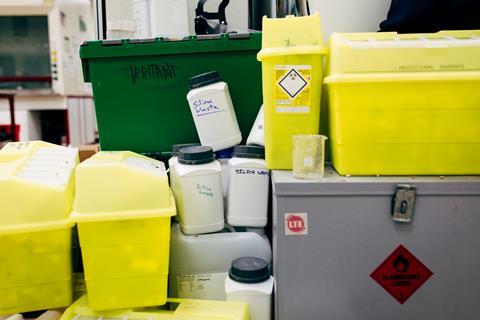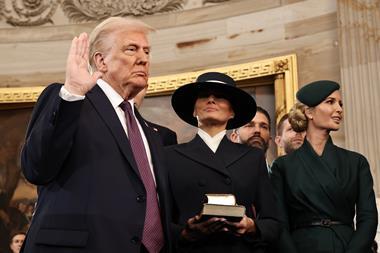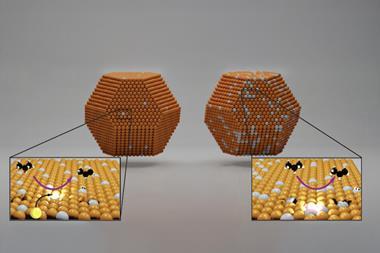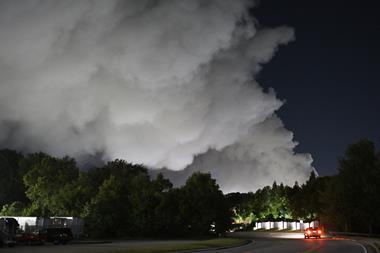A federal judge has issued a temporary restraining order that prevents the US Department of Energy (DOE) from implementing a 15% cap on indirect cost rates for universities whose research is funded through its grants.
The DOE had announced the cap last week to reduce the financial support it provides for research-related expenses like lab maintenance, management of hazardous materials, utilities and administrative staff. The move drew immediate legal action and criticism from the academic community.
The DOE’s move to cap indirect research costs came two months after the US National Institutes of Health (NIH) issued a similar policy, which was blocked by a district court on 4 April. The judge in that case ruled that the NIH had violated federal statute, was ‘arbitrary and capricious’ in establishing the cap, didn’t follow proper rulemaking procedures, and violated prohibitions against applying new rules retroactively. The NIH has filed an appeal aiming to overturn that permanent injunction.
The DOE’s new policy, unveiled on 11 April, would actually go further than the NIH’s policy by terminating all research grants the agency had awarded to higher education institutions that do not conform with the updated rule.
In total, the DOE allocates more than $2.5 billion (£1.9 billion) to fund research at more than 300 colleges and universities throughout the US. According to the agency, the average rate of indirect costs incurred by its grant recipients at colleges and universities is more than 30%. By halving the sum of money that it gives universities for these so-called ‘facilities and administrative’ (F&A) expenses, the DOE estimates that it will save more than $405 million annually.
‘The purpose of Department of Energy funding to colleges and universities is to support scientific research – not foot the bill for administrative costs and facility upgrades,’ stated DOE secretary Chris Wright.
Immediate and devastating
Within a few days of the DOE’s announcement, several academic organisations sued the agency and Wright. The lawsuit was filed on 14 April, by the Association of Public and Land-grant Universities (APLU), the Association of American Universities (AAU) and the American Council on Education (ACE) alongside nine universities: Brown University, the California Institute of Technology, Cornell University, the University of Illinois, the Massachusetts Institute of Technology, the University of Michigan, Michigan State University, Princeton University and the University of Rochester.

These academic groups describe the DOE rate cap policy as ‘flagrantly unlawful’ and argue that it would have an ‘immediate and devastating’ impact on critical research across the US. The organisations also worry that DOE’s move would set a dangerous precedent that could be used to undermine government investments in research at many other federal agencies.
On 16 April, the Massachusetts district court issued a temporary restraining order to prevent the DOE from implementing the rate cap policy. The DOE has until 22 April to file an appeal.
The Council on Governmental Relations (COGR), a Washington, DC-based association of independent research institutes and affiliated medical centres, is also staunchly opposed to the agency’s new 15% cap on F&A reimbursement.
‘This is a ruinous policy. Our nation’s economic competitors are laughing at another self-inflicted policy wound that will slow the pace of American research and innovation,’ COGR’s president Matt Owens said in a statement published in response to the new cap. ‘First it was NIH. Now it is DOE. Bad policy is bad policy, and doubling down on it doesn’t make it better.’
Chemistry World has learned that several of COGR’s member institutions have already reported receiving notifications from the government that their active research grants and cooperative research agreements will be terminated if their institution does not accept the agency’s new, lower 15% F&A reimbursement rate.
A stated goal
The moves to slash federal contributions to indirect research costs are not unexpected. Capping the indirect costs of research grants was a stated goal of Project 2025, the conservative blueprint for a second Trump administration. Many of Project 2025’s authors are now key figures in Trump’s team, including Russell Vought, who currently heads the White House Office of Management and Budget and helps to manage the federal budget and oversee the performance of federal agencies.
There is concern that the administration will expand these proposals to other research agencies like the National Science Foundation (NSF), which is the main funder of basic science and engineering research in the US.

‘Most people were expecting this to be tried at other agencies,’ Holden Thorp, who is editor in chief of the Science journals and a chemistry professor at George Washington University in Washington, DC, tells Chemistry World.
‘The arguments against doing this are the same: the social contract between the universities and the federal government that has enabled American success on nearly every front for the last 80 years … involves sharing the infrastructure costs for research,’ says Thorp. ‘The administration mistakenly thinks walking away from that contract in the middle of intense global competition for scientific prowess is a good idea.’
These sentiments are echoed by Neal Lane, a physicist who served as science adviser to former president Bill Clinton and previously as director of the NSF. He says the argument that the federal government has been spending more on overheads than other research supporters is irrelevant and far off target.
‘The federal government has the responsibility, as stated in the mission statement of NSF, to “promote the progress in science”,’ says Lane, who notes that other federal agencies have similar obligations to support research to address national needs. ‘No private foundation, donor, state government or company has that responsibility,’ he adds.
Paul Anastas, a chemist at Yale University and former director of the US Environmental Protection Agency’s Office of Research and Development agrees. ‘Every scientist knows that labs don’t build themselves or power themselves and that instruments don’t maintain themselves. Those are indirect costs,’ he says. ‘The reason that the US research infrastructure has been the envy of the world is because those indirect costs were recognised as some of the best investments in US history.’

















No comments yet